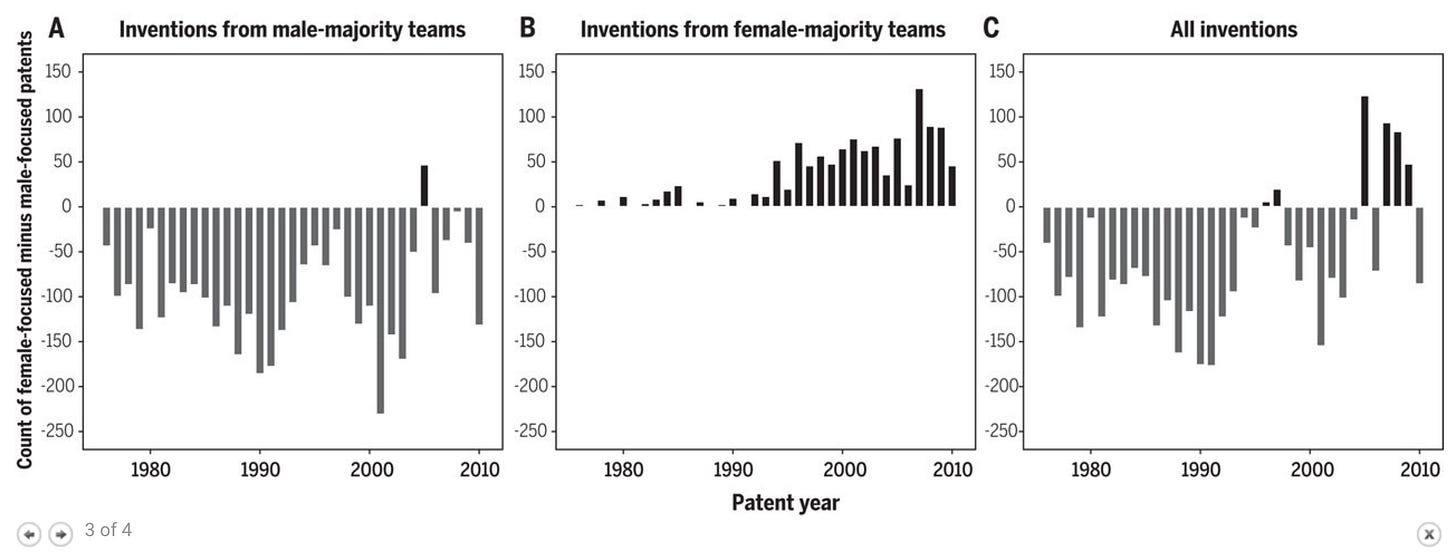Latest Findings & The Future of STEM
Human potential is the new gold and the single most valuable societal resource of the digital era.
In an earlier newsletter we outlined (and presented data showing) why every government seeking prosperity for its people in the digital economy must: (1) setup human potential pipelines into STEM education, STEM up/re/skilling, and STEM career pathways; and (2) approach this task as one of building digital infrastructure for the digital economy (akin to 5G networks, renewable power generation, etc).
A new research paper published in Science on June 18 presents key data findings that boost our call to action for setting up human potential STEM pipelines.
The paper’s title — “Who do we invent for? Patents by women focus more on women’s health, but few women get to invent” — captures its key finding: there’s a massive inventor gender gap in who works on STEM innovation, and that gap shapes in turn the type of innovations that come out.
In other words, male-dominated medical innovation teams produce more male-benefiting medical innovations: who benefits from innovation depends on who gets to invent!
The inventor gender gap amplifies the invention sex gaps. Lack of women among STEM inventors translates into a lack of women-focused medical inventions.
The takeaways?
Using technology to identify and guide more girls and young women into STEM education and STEM careers will increase the volume and breadth of innovation.
Using technology to unleash the human potential hidden in a country’s population and offer transformative economic returns, including:
people moving to higher skilled, higher paying jobs
larger share of the population enjoying better living standards
more innovation across the economy
higher rate of new business formation
faster and more evenly shared economic growth






